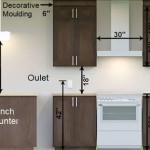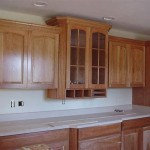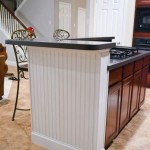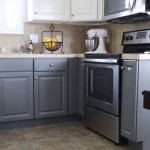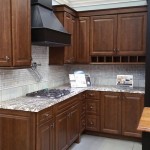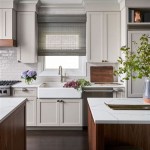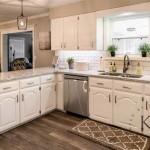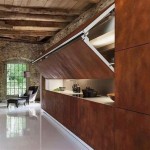Essential Aspects of 1950s Kitchen Cupboards
1950s kitchen cupboards played a pivotal role in shaping the aesthetics and functionality of the post-World War II home. Their distinctive features, materials, and design principles continue to captivate homeowners and collectors alike. This article delves into the essential aspects of 1950s kitchen cupboards, exploring their significance and lasting impact on kitchen design.
### 1. Curved Lines and Soft EdgesOne of the most characteristic features of 1950s kitchen cupboards was their embrace of curved lines and soft edges. This design element, influenced by the Art Deco movement of the 1920s and 1930s, created a sleek and modern look, breaking away from the more traditional sharp angles of earlier eras. The curved lines added a sense of fluidity and movement to kitchen spaces.
### 2. Space-Saving InnovationsThe 1950s witnessed a post-war housing boom, resulting in a need for compact yet functional living spaces. 1950s kitchen cupboards reflected this trend, incorporating space-saving innovations such as sliding doors, pull-out shelves, and lazy Susans. These clever designs allowed homeowners to optimize storage space while maintaining a streamlined and organized kitchen.
### 3. Durable Materials and Construction1950s kitchen cupboards were constructed using durable materials such as metal, laminate, and solid wood. Metal cabinets, particularly those made of steel, offered excellent durability and resistance to wear and tear. Laminate, a material consisting of a decorative layer bonded to a substrate, provided a cost-effective and stylish alternative to more expensive materials like wood. Solid wood cabinets, while less common than metal or laminate, added a touch of warmth and natural beauty to kitchen spaces.
### 4. Bright Colors and PatternsIn keeping with the optimistic spirit of the era, 1950s kitchen cupboards were often adorned with bright colors and bold patterns. Pastel hues, such as pink, turquoise, and yellow, were particularly popular, reflecting the vibrant optimism of the post-war era. Geometric patterns, checkerboard designs, and floral motifs also added visual interest and personality to kitchen spaces.
### 5. Integrated AppliancesAs home technology advanced, the 1950s saw the rise of integrated appliances in kitchen cupboards. Appliances such as refrigerators, stoves, and dishwashers were designed to seamlessly blend into the cupboards, creating a sleek and cohesive look. This integration further enhanced space optimization and improved the overall aesthetic appeal of the kitchen.
### Conclusion1950s kitchen cupboards were more than just storage solutions; they embodied the era's embrace of modern design, innovation, and functionality. Their distinctive features, materials, and construction methods continue to inspire contemporary kitchen design, demonstrating their enduring legacy in shaping the aesthetics and functionality of the American home.

1950s Vintage Kitchen Larder Cupboard Cabinet Kitchenette Cabinets House

Frances And Doug S Warm Inviting Red 1950s Wood Kitchen Retro Renovation

Diy 1950s Kitchen Remodel With Painted Cabinets Average But Inspired

Before And After A 1950s Kitchen Gets An Affordable Upgrade

1950s Kitchen Renovation Ideas Checking In With Chelsea

Diy 1950s Kitchen Remodel With Painted Cabinets Average But Inspired

Our 50s Kitchen Renovation Week 8 Natalie Curtiss Ilration
Kitchen Designs Of The Past Part 2 1950 S Alchemy Renovations Saskatoon

How The Kitchen Has Changed Over 100 Years Vintage Kitchens

Vintage Kitchenette Cabinet 1950s 1960s Yellow Cupboard Retro Kitchen Larder In Home Furniture D Cabinets Cupboards
Related Posts

